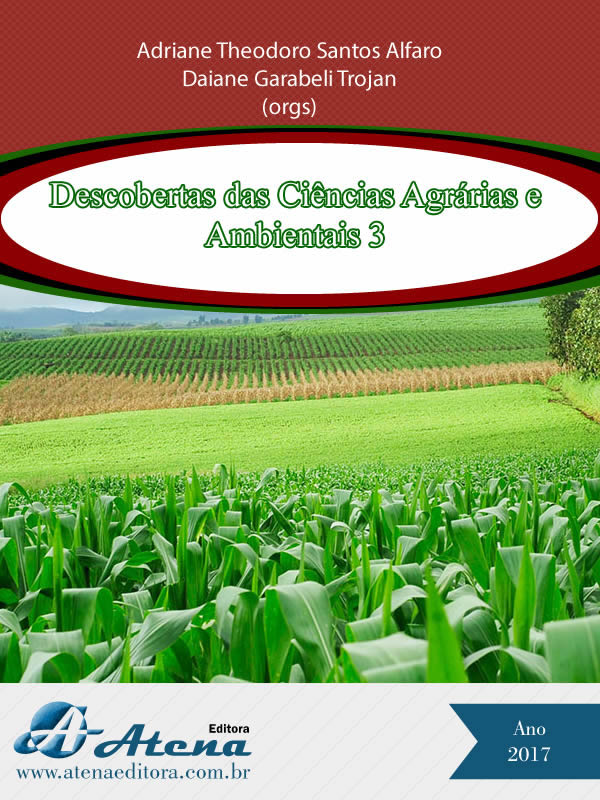
MODELAGEM PARAMÉTRICA APLICADA NA ESTIMAÇÃO DO DESEMPENHO PRODUTIVO E PARÂMETROS FISIOLÓGICOS DE OVINOS MORADA NOVA
A caracterização (modelagem) da unidade de produção animal é de suma
importância para o projeto e expansão (produção em escala industrial) de
instalações de confinamento ou para simulações em tempo real de problemas
rotineiros em galpões análogos. Diante disso, o objetivo desse trabalho foi
apresentar modelos heurísticos, para a predição do desempenho produtivo e
parâmetros fisiológicos de ovinos da Raça Morada Nova, em função da
temperatura ambiente e umidade relativa do ar a que os animais foram
submetidos. O modelo desenvolvido tem, como variáveis de entrada: temperatura
do ar (°C) e umidade relativa (%), sendo as variáveis de saída consideradas:
consumo de água (CA, kg), consumo de ração (CR, kg), frequência respiratória (FR,
mov.min-1), frequência cardíaca (FC, bat.min-1) e temperatura superficial (TS,°C).
Para tanto, neste projeto utilizou-se ferramenta computacional para construção dos
modelos do processo o software SCILAB. Esta ferramenta oferece diversas
funcionalidades para simulação de cenários e construção de diversos modelos que
atenderam as necessidades do presente trabalho. Com base na comparação
entres os resultados gerados pelo modelo e os experimentais, obtiveram-se
coeficientes de determinação (R²) – índice de confiança – na ordem de 0,97; 0,9;
0,96; 0,9957 e 0,9996, para CA, CR, FR, FC e TS, respectivamente.
MODELAGEM PARAMÉTRICA APLICADA NA ESTIMAÇÃO DO DESEMPENHO PRODUTIVO E PARÂMETROS FISIOLÓGICOS DE OVINOS MORADA NOVA
-
DOI: Atena
-
Palavras-chave: Águas salinas, conforto térmico, modelagem matemática.
-
Keywords: Biodigester, waste swine, Effluent, Golden Mussel, Arugula.
-
Abstract:
In the search for adequate management of organic waste, the coproducts
have been inserted alongside the biodigesters, a practice called
codigestion. For this process the golden mussel (Limnoperna fortunei) was used.
Thus, the objective of this research was to evaluate the process of codigestión of
the mussel associated with swine, in the search for a biofertilizer rich in minerals,
biogas production and an environmentally correct destination. Three biodigesters
were used. BI: 100% swine, BII: swine manure + 240g of crushed mussel and BIII:
swine manure + 120g of crushed mussel. The biodigesters were monitored for 60
days, taking into account the temperature for codigestión to occur. The pH, EC, the
N, C, Ca contents of the residues, the biofertilizer mass and the Phytotoxicity test
were analyzed. The pH ranged from 6.88 to 7.24. CE varied from 23.7 to 112.2 dS
m-1 for C, the values were BI: 77.43%, BII: 62.02% and BIII: 83.83%, the
percentage of N was BI: 1.169%, BII: 0.602% and BIII: 1.015%. The determination
of calcium (Ca) in biofertilizers allowed us to identify the amount of: 106.33 mg L-1
for BI, 229.03 mg L-1 on BII and 359.90 mg L-1 on BIII. The total solids were
between 0.12 to 0.35%, and the fixed solids: 16.16 to 37.98%, being the highest
percentage in those effluents from the addition of mussels. In the Phytotoxicity Test,
the biofertilizer presented toxic results, as the germination index was lower as the
biofertilizer concentration increased. The biogas production by the biodigestion
system is a viable alternative for waste disposal and an alternative for energy
production, since the production of biogas with the addition of golden mussel was
satisfactory, with a production superior to the biodigester with 100% swine.
-
Número de páginas: 15
- Patrício Gomes Leite
- Jordânio Inácio Marques
- GERONIMO BARBOSA ALEXANDRE


